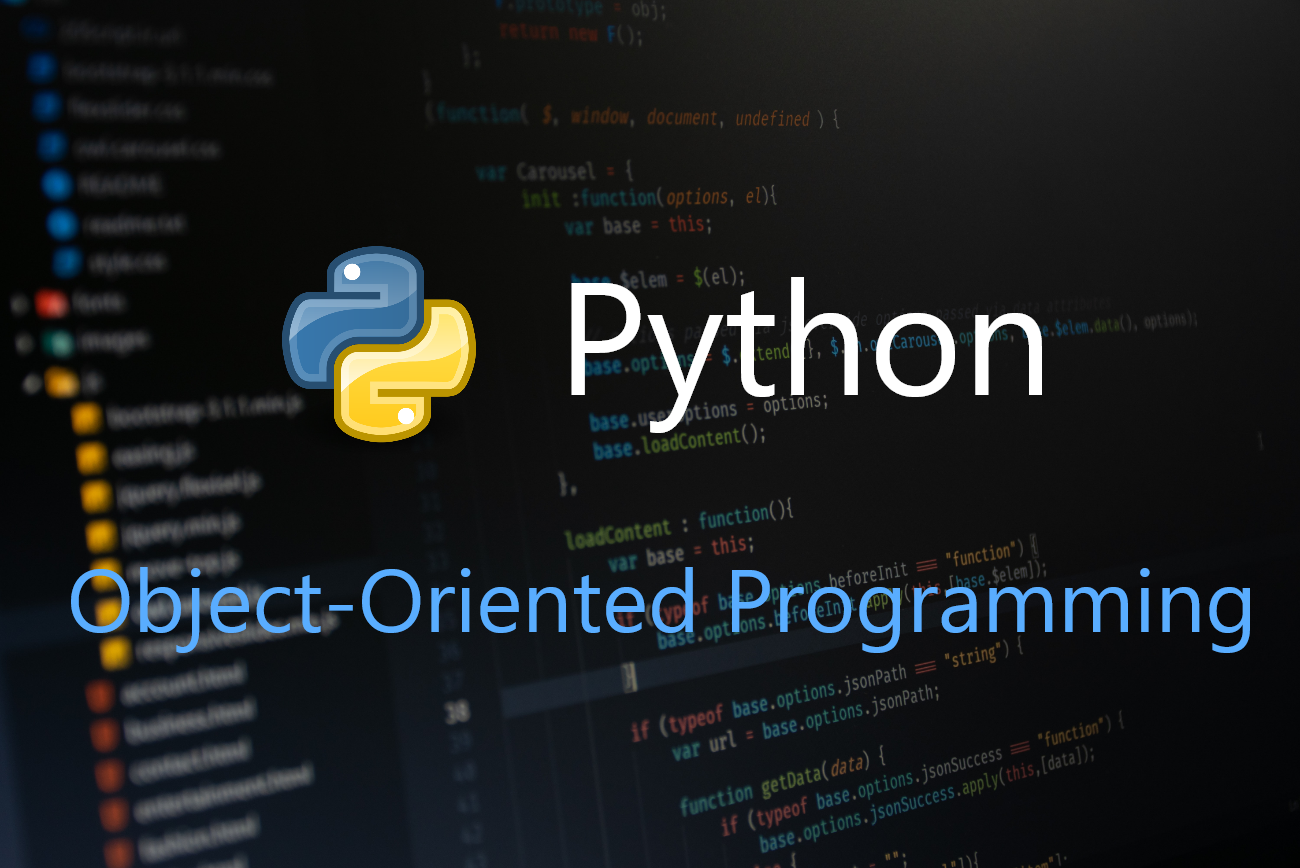18/November - Object-oriented Python

Prerequisites
- You have completely set up one of the three Python development options
- You have solved the tasks from the last class
Class Curriculum
| Section content | Expected time (mins) | Pre - Requirements |
|---|---|---|
| Lesson Goals | 5 minutes | ❌ |
| Check-in on pre-reqs and questions from last class | 15 minutes | ❌ |
| Procedural programming | 10 minutes | ❌ |
| Object-oriented Programming | 10 minutes | ❌ |
| Pillars of object-oriented programming | 10 minutes | ❌ |
| Break | 10 minutes | ❌ |
| Task: Extend the pet clinic example | 20 minutes | ❌ |
| Bonus Task: Implement a REDI Course Management System | 20 minutes | ❌ |
| Check-out | 10 minutes | ❌ |
0. Lesson Goals
- Learn the difference between procedural vs. object-oriented programming.
- Learn the pillars of object-oriented programming in Python
- Classes
- Objects
- Constructor functions
- Object Methods
- Inheritance
1. Check-In
- What was particularly challenging last class? Are there any remaining questions from last class?
- What exercises were the most challenging? (Respond in the chat)
2. Procedural Programming
Procedural programming involves writing sequential code which is executed from top to the bottom of the file. You are not allowed to switch steps otherwise the program will fail to run. You can think of procedural programming like the process of boiling some spaghetti.

- You get a clean pot
- You pour some water into the pot
- You switch on the cooker
- You wait for the water to start boiling
- You add the Spaghetti
- You add some salt
- You wait for about 10 to 15 minutes for the Spaghetti to cook
Here are some characteristics of procedural programming:
- In procedural programming, program is divided into small parts called functions.
- Procedural programming follows top down approach.
- Adding new data and functions is not easy.
- Procedural programming does not have any proper way for hiding data so it is less secure.
- In procedural programming, function is more important than data.
- Procedural programs are not modelled according to real-world structure.
- Procedural programming languages include C, FORTRAN, Pascal, Basic etc
3. Object-Oriented Programming
Object-oriented programming involves writing code in terms of the objects that make up the problem you are trying to solve. The definitions of these objects in the code can be switched around without causing the program to fail. You can think of object-oriented programming like the process of solving a jigsaw puzzle.

Here are some characteristics of object-oriented programming:
- In object-oriented programming, the program is divided into small parts called objects.
- Object-oriented programming follows bottom up approach.
- Adding new data and function is easy.
- Object-oriented programming provides data hiding so it is more secure.
- In object-oriented programming, data is more important than function.
- Object-oriented programs are modelled according to real-world structure.
- Object-oriented programming languages include C++, Java, Python, C# etc.
4. Pillars of Object-Oriented Programming in Python
Classes
Classes represent a group of objects you would like to manage in your program. Classes in python are declared as follows:
1class class_name:
2 class_body
For example if you are writing code to manage the pets at a pet clinic then your program is managing different pets, whether they are
dogs, cats, turtles etc. In your program you would represent all these different breeds using a Pet class.
1class Pet:
2 pass
pass keyword is used when we do not want to specify any details of the class.
Objects
When we define a class only the description or a blueprint of all possible objects defined by that class is created. For example one particular cat at the pet clinic is an object of the Pet class. When you create an object from a class in your code, you assign it to a variable to allow you do something meaningful with that specific object. You create an object and assign it to a variable as follows:
1object_variable = class_name()
For example, an object for a cat called Maya can be created from the Pet class as follows:
1maya = Pet()
Now you can print the Maya object
1print(maya)
2# outputs something like -> <__main__.Pet object at 0x7ff41e9bcdd0>
0x7ff41e9bcdd0 above is the address of Maya in memory on my computer. The value will be different on your computer
Constructor functions
The examples above are classes and objects in their simplest form, and are not really useful in real life applications.
To understand the meaning of classes we have to understand the built-in __init__() constructor function.
All classes have a function called __init__(), which is always executed when an object of the class is being constructed.
Use the __init__() function to assign values to object properties, or other operations that are necessary to do when the object is being created:
For example, in the example from above
1maya = Pet()
We know that object relates to a cat called Maya because we stored the object in a variable called maya.
Now consider if we instead named the variable differently:
1pet_one = Pet()
We've lost all hints that the pet_one object actually refers to Maya. We can add a constructor function to the Pet
class which will allow us to give names to pets objects we create.
1class Pet:
2 def __init__(self, name):
3 self.name = name
With the new constructor function added to the Pet class, we can now create pet objects with actual names
1pet_one = Pet("Maya")
2pet_two = Pet("Felix")
And we can selectively print the names of each pet
1print(pet_one.name)
2print(pet_two.name)
3# outputs
4# Maya
5# Felix
Object Methods
Objects can also contain functions called Methods. Methods allow the program to perform actions on objects.
Let us add a hello method to the Pet class that the pets can use to introduce themselves (if they could speak)
1class Pet:
2 def __init__(self, name):
3 self.name = name
4
5 def hello(self):
6 print("Hello my name is " + self.name)
Now we can create a pet called called Maya and have her say hello!
1pet_one = Pet("maya")
2pet_one.hello()
3# output -> Hello my name is maya
Class inheritance
Inheritance allows us to define a class that is a sub-category of another class. For example at the pet clinic, we have
a Pet class. But using the Pet class, we cannot differentiate between cats, dogs, turtles or birds.
We can create new classes for the different kinds of animals at the pet clinic and have all of them inherit from the Pet
class.
1class Pet:
2 def __init__(self, name):
3 self.name = name
4
5 def hello(self):
6 print("Hello my name is " + self.name)
7
8class Cat(Pet):
9 pass
10
11class Dog(Pet):
12 pass
13
14class Turtle(Pet):
15 pass
16
17class Bird(Pet):
18 pass
The Pet class is known as the parent class.
The Cat, Dog, Turtle and Bird classes are known as child class.
Now we can create more pet objects using their specific classes and they will all be able to say hello because they've inherited
the hello method from the Pet class
1cat_one = Cat("maya")
2dog_one = Dog("bosco")
3turtle_one = Turtle("speedy")
4bird_one = Bird("diver")
5
6cat_one.hello()
7dog_one.hello()
8turtle_one.hello()
9bird_one.hello()
10
11# outputs
12# Hello my name is maya
13# Hello my name is bosco
14# Hello my name is speedy
15# Hello my name is diver
Even though we now have various child classes of the parent class Pet, each of those child classes have characteristics
that apply to only them. For example cats can meow, dogs can bark, birds can fly and turtles can hide in their shell.
We can add more specific class methods into the various child classes to provide more specific behaviors.
Lets add:
- A
meowmethod to theCatclass which causes the cat to make the meow sound - A
barkmethod to theDogclass which causes the cat to bark - A
flymethod to theBirdclass which causes the bird to fly - A
hidemethod to theTurtleclass which causes the turtle to go into its shell
1class Pet:
2 def __init__(self, name):
3 self.name = name
4
5 def hello(self):
6 print("Hello my name is " + self.name)
7
8class Cat(Pet):
9 def meow(self):
10 print("Meeeeeooooww! I am a cat!")
11
12class Dog(Pet):
13 def bark(self):
14 print("Wooof! Woof! I am a dog!")
15
16class Turtle(Pet):
17 def hide(self):
18 print("Hide! I'm shy! I am a turtle!")
19
20class Bird(Pet):
21 def fly(self):
22 print("Swoooosh! I'm flying away! I am a bird!")
Now lets get all our pets to first say hello and then perform the actions they are good at
1cat_one = Cat("maya")
2dog_one = Dog("bosco")
3turtle_one = Turtle("speedy")
4bird_one = Bird("diver")
5
6cat_one.hello()
7cat_one.meow()
8
9dog_one.hello()
10dog_one.bark()
11
12turtle_one.hello()
13turtle_one.hide()
14
15bird_one.hello()
16bird_one.fly()
17
18# outputs
19# Hello my name is maya
20# Meeeeeooooww! I am a cat!
21# Hello my name is bosco
22# Wooof! Woof! I am a dog!
23# Hello my name is speedy
24# Hide! I'm shy! I am a turtle!
25# Hello my name is diver
26# Swoooosh! I'm flying away! I am a bird!
5. Task: Extend the pet Clinic Example
- Write out all the code in the examples above in your preferred python environment and verify that they work for you
- Add the ability to specify an age of the pet to the
Petclass - Create a list of 20 pets:
- 5 cats with different names and ages
- 5 dogs with different names and ages
- 5 turtles with different names and ages
- 5 birds with different names and ages
- Update the
hellomethod in thePetclass to also print the age of the pet - Using a for-loop, go through the list of 20 pets and for each pet with an even-numbered age, make the pet say hello!
6. Bonus Task: Implement a REDI School Management System
- Create a
Schoolclass which represents all the different REDI school locations - Each school location will be an object of the
Schoolclass - Create a
Courseclass which represents all the different courses offered at REDI School - Each actual course will be an object of the
Courseclass - Create a
Studentclass which represents all the different students in a REDI School course - Each actual student will be an object of the
Studentclass - Each student object must have a name
- Each course object must have a course name and a list of students
- Each school object must have a location name and a list of courses
- Test your system by:
- Creating 3 REDI School objects representing the locatios in Germany
- Creating 1 course object representing a course offered at one of the schools (3 course objects in total)
- Creating students objects representing each of the students of the
Intro To CScourse.